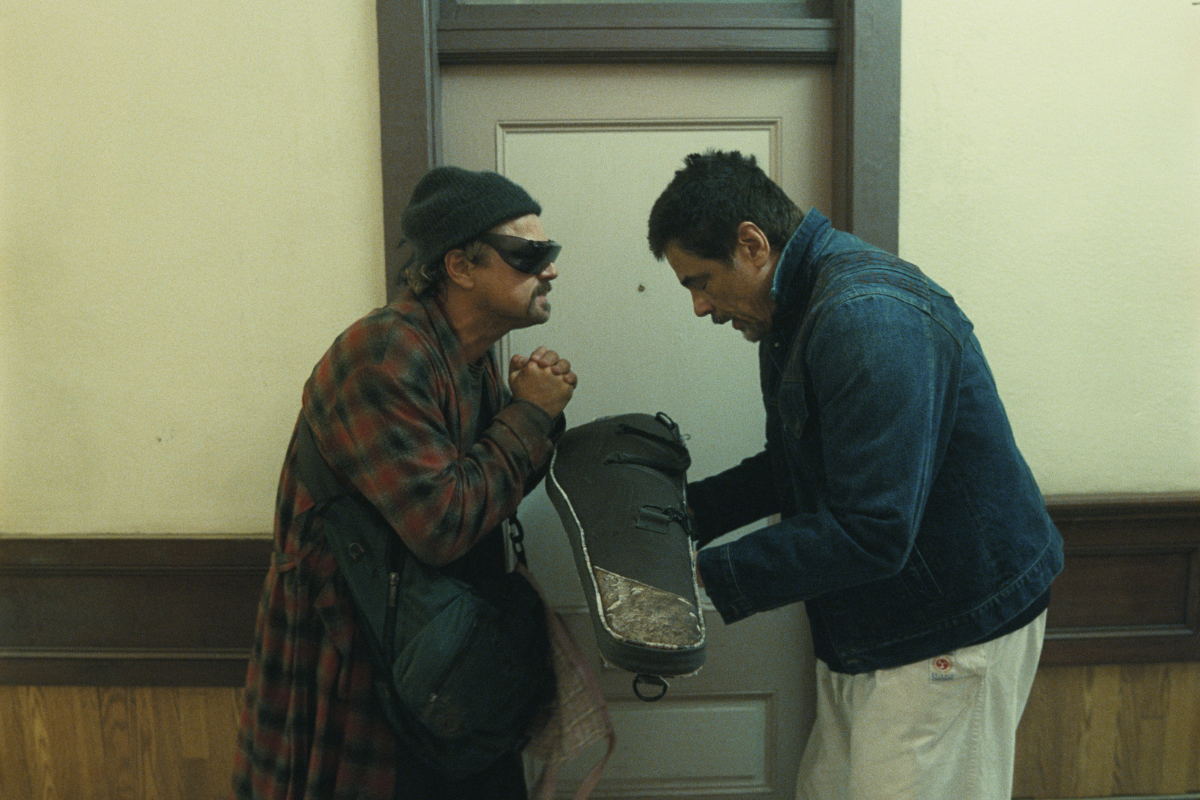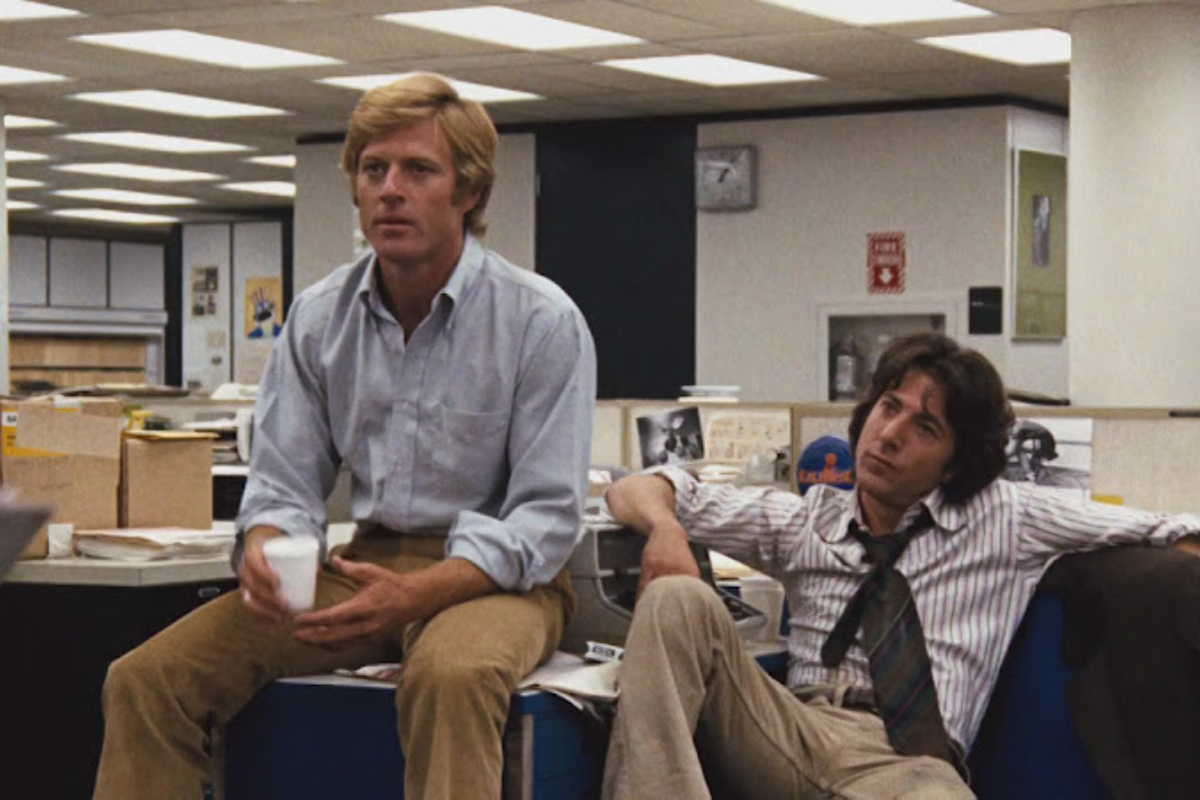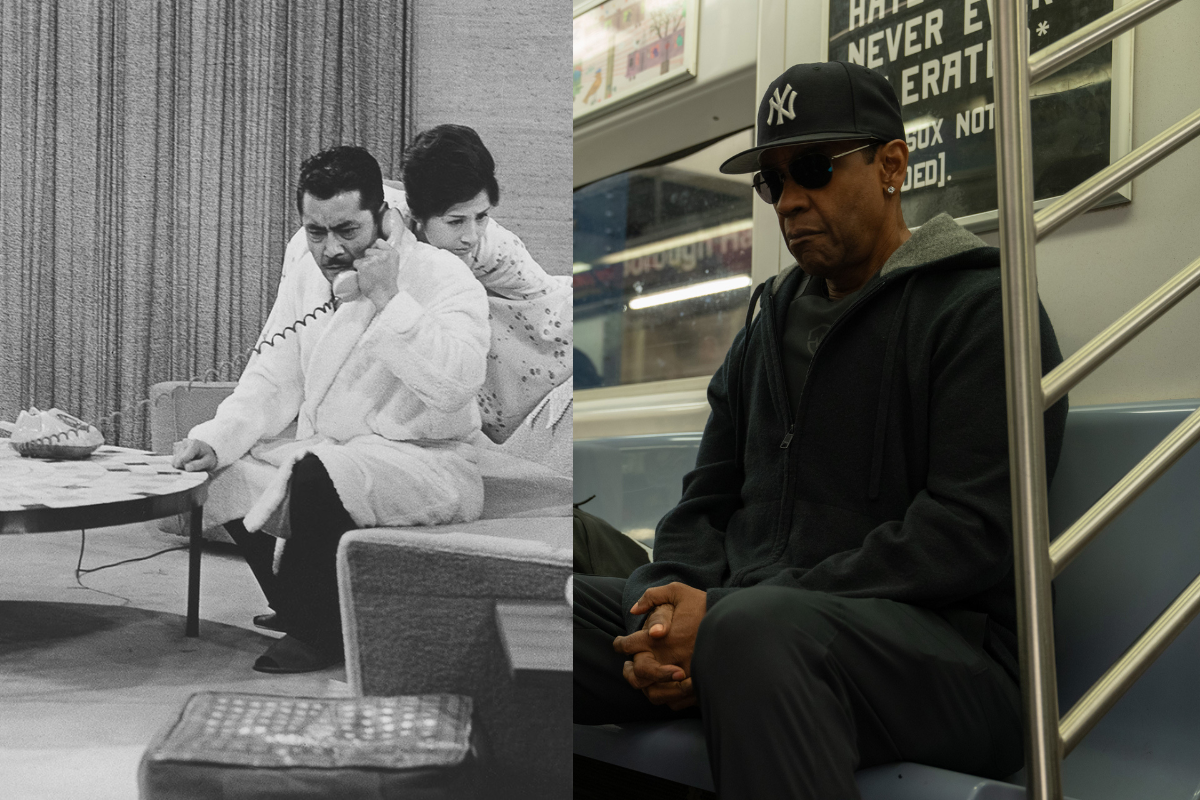UNDERSTANDING SCREENWRITING: Charles Foster Kane, Ethan Hunt, Lilo, Zsa-zsa Korda, and Some People You Have Never Officially Met But May Be Familiar to You
The films are Citizen Kane, Mission Impossible-The Final Reckoning, Lilo & Stitch, The Phoenician Scheme, Fountain of Youth.
Did Good Old Charlie Kane Have Orange Hair?
Citizen Kane (1971. Written by Herman J. Mankiewicz and Orson Welles. 119 minutes)
During the 40 years I taught film history and screenwriting at Los Angeles City College, I showed Citizen Kane almost every semester in the history course. I tried a couple of times not showing it, but I discovered you cannot teach the history of film without Citizen Kane. It is just too influential.
I retired from teaching in 2011 and have not watched Kane since, even though I received a boxed DVD set of it as a retirement present. So, the other day I decided to watch it.
The thing that jumped right out at me watching it in 2025 is the similarities between Kane and Donald Trump. The film starts off with a newsreel about Kane and featured in it is Kane’s mansion in…Florida. Kane was based on journalist William Randolph Hearst and his mansion was in California, which is now a state park you can visit. Trump’s Mar-a-Lago is in Florida, but it will seem familiar to you as you watch the shots in the beginning of Kane, especially when the narrator says “It is the costliest monument a man has built to himself.”
Kane, like Hearst, is a newspaper tycoon who wants to get into politics. He runs for governor of New York, and looses the election when his “love nest” is uncovered. Well, that was in the 1890s when that could destroy a career in politics, and that has changed, to say the least. But in the press room on election night, they have two front pages made up: “Kane elected” and “Fraud at Polls.” They go with the second one.
Kane at least starts out believing he is to help the underclass, but there is no evidence I know of that Trump claimed until recently he was trying to do that.
Kane slowly gets corrupted as his power increases. During the famous breakfast table montage, his wife Emily, complaining about what Kane is doing, says, “…people will think--“ and he cuts her off with, “What I tell them to think.” You can easily imagine Trump or one of his minions saying that.
There are, of course, major differences between Kane and Trump. Kane has a sense of humor about himself, pointing out as his fortune fades, saying “If I hadn’t been rich, I might have been a really great man.”
Look at Citizen Kane and see if you can see any other similarities.
Three Bushels of MacGuffins.
Mission: Impossible-The Final Reckoning (2025. Written by Erik Jendresen & Christopher McQuarrie, based on the television series created by Bruce Geller. 169 minutes)
So, at the end of the previous film, Mission Impossible: Dead Reckoning (2023), after two hours and 40-plus minutes and a lot of running around and one of the greatest train wrecks in the history of the movies, Ethan Hunt has the key. Well, the two parts of the key. But what’s it for?
So, here we are two years later and we get a lot, I mean a LOT, of technobabble about something called The Entity, who in the two years between films has essentially taken over every computer system in the world. More or less. So, the villain here—well, the main one—is the computer system. Yes, one character does mention Artificial Intelligence, but only once.
I got a bit lost in these early scenes as the writers were trying to connect everything in the MI eight-previous film universe to this film. I suppose if you are a more devoted MI fan than I am you may have that all memorized, but I haven’t. There are characters who turn up here who I thought were the bad guys but aren’t here (mostly in previous films they have been government officials offended by Hunt’s permission to do anything he wants unlike most people in government jobs).
So, what the government has discovered is the The Entity is about to complete its takeover of all the computers systems in the world, especially those that control the launches of nuclear weapons of all the nuclear powers. So, it is up to Ethan Hunt to stop that happening, of course. And he has only ... well, a limited amount of time to do it
Specifically what he has to do is find the device that the key—you remember the key, don’t you?—fits into. Well, of course it is not just sitting on the Paramount back lot. It is in a Russian submarine. Yep, the one that sank in the opening of the previous film. But nobody knows where. Now not only is Hunt trying to find it, but so are the Russians.
Now if this were a 1950s B-movie, this would have been on the back lot with rear projection. But this is a movie starring (and produced by) the star of the Top Gun movies the Navy loves. So, we get some impressive footage of a real U.S. Navy aircraft carrier and a lot of other big toys. The budget for the film is said to be about $300 million, and every dollar is up on the screen.
There are frequent clips from previous MI films, but most of them go by so quickly they don’t do much for this film. An exception is the return of William Donloe. You remember him, of course. Well, you remember in the first film Hunt was hanging by wires in a safe room to steal something? And there was a computer geek trying to figure out what was going on? That was Donloe. And after that, we learn here, he was exiled to a cabin in Alaska, which is a computer station that helps keep track of the Russian ships in the area. And he is happy there. He is married to a nice Inuit woman and they are both delighted to help out. The scenes with Donloe have a real heft to them that a lot of the rest of the film does not have, especially since Donloe is played by Rolf Saxon, who played the part in the first one.
So, they track down the sunken sub and Hunt goes down to the sub, finds the MacGuffin he is looking for and survives. This is one of the best scenes in the film because it is pure suspense.
They get the MacGuffin and the key fits and the movie is over. Not on your life. It goes on for almost another hour, since there is at least one real villain trying to get control of The Entity. There is a lot of running around and shooting, and if that is not enough (it really would be enough), we get the showpiece of the film, which is Hunt and the baddie dueling it out in WWI bi-planes, which just happen to be around. This scene goes on and on and and…
Like many other scenes in the film, it depends on a lot of unrealistic coincidences. But then the MI films have always had those. See my comments on the ones in MI: Rouge Nation (2015) in my review here.
The day before I saw Final Reckoning I spent Memorial Day watching my DVD of The Great Escape (1963). It runs one minute shorter than Final Reckoning. It is a much tighter and better film because the script is much tighter. The script for Escape was written by James Clavell and W.R. Burnett (and some others) and it holds together better. And the scene of Steve McQueen (and/or his stunt double) riding the motorcycle is much shorter than the bi-plane scene here. And better. Longer is not always better.
Girls and their Pets.
Lilo & Stitch (2025. Screenplay by Chris Kekaniokalani Bright and Mark Van Waes, based on the screenplay for the 2002 animated film by Chris Sanders and Dean DeBlois. 108 minutes)
Some people are under the impression that the 2002 animated film was a flop. The IMDb estimates its budget was $80 million and its world-wide gross was $274 million plus. OK, that’s not as much as a lot of Pixar movies make, but it is not chopped octopus. Some people were surprised that when this live-action version of the film opened on the Memorial Day Weekend it not only beat out Mission: Impossible-The Final Reckoning , but doubled its gross. Lilo grossed $146 million-plus, M:I grossed $64 million plus.
OK, M:I runs an hour longer than Lilo, which meant theaters could not get as many showings a day in as they could with Lilo. But the M:I films have been more recent. The first Lilo was 23 years ago. Why would so many people turn out for a remake 23 years later?
I think the answer to that (and I suspect everybody in Hollywood is trying to find an answer to that question) is that that the character of Stitch, a troublemaking little alien from somewhere else in the universe, became a favorite stuffed animal toy for kids, especially little girls. Especially for girls who have reputations as troublemakers themselves, as does Lilo. I don’t know how Lilo was introduced in the first film, but in this one, we first see her being a troublemaker. She is likeable as a character in a movie, although I am not sure we would want to hang out with her in real life.
So, when Lilo is running through an animal shelter she immediately connects with Stitch, thinking he is just a weird kind of dog. Her weird kind of dog. High jinks ensue. Some of the high jinks are way over the top and probably come from the animated film. I find a lot of “family” films way over the top. This is one of those, but it works here because of the characters (from the first film) and the acting (some of it in the computer). Computers cannot do everything. Really. Can we begin to accept that?
Rachel Whitley is the casting director and she had done an incredible job. I hate to think how long it took her to find Maia Kealoha, who plays Lilo. Kealoha just pops off the screen and you are happy to follow her wherever she wants to go. Lilo’s big sister is Nani, played by Sydney Elizebeth Agudong. She is gorgeous and charming and has great chemistry with Kaeloha. Their parents have died, so Nani is taking care of Lilo, with great difficulty. There are almost as many references to “family” as there are in any four Fast and Furious movies.
The supporting cast is equally well-chosen. Tia Carrere, who was the voice of Nani in the original film, is Mrs. Kekoa, the child welfare officer, as nice a call back of an actor as that of Rolf Saxon in M:I - The Final Reckoning.
The fact that all the actors show up to their best advantage suggests that the director has worked carefully with them. He is Dean Fleischer Camp, whom I had not heard about before. You can see from the his IMDb page here that he has had a lot of experience as a writer, director, and film editor. The talent of his that is crucial to this film is his work with the actors. One of the great supporting actors is Amy Hill, playing a next door neighbor. She is always doing something that is useful to the scene, even if she is not the heart of it. Name me any other director that lets that happen.
The Return of Fey, But Not Tina, Alas.
The Phoenician Scheme (2025. Story by Wes Anderson & Roman Coppola, screenplay by Wes Anderson. 101 minutes)
The snarky sub-head of my review of one of my favorite Wes Anderson movies, The Grand Budapest Hotel (2014), which you can read here, was “Fey, but Not Tina Fey.” A lot of Anderson’s movies are like that. In the case of Budapest Hotel it worked, for reasons you can read in the review.
Here it doesn’t. The dialogue is too flat, with the exception of that for Zsa-zsa Korda, the conman who is trying to pull of the scheme of the title. It give Benicio del Toro, who plays him, a lot to work with, and he works it to within an inch of its life. The rest of the cast is not given much to play and they are directed by Anderson to give very flat line readings. The cast list is, as it often is in an Anderson film, impressive: Bill Murray, F. Murray Abraham, Tom Hanks, and Scarlett Johansson. For Johansson’s part, Anderson could have had any number of actors play the role. Maybe Anderson needs to take directing lessons from Dean Fleischer Camp.
Been There, Done That, Got the T-Shirt.
Fountain of Youth (2025. Written by James Vanderbilt. 125 minutes)
James Vanderbilt has been writing scripts for a while, and some of them turned out reasonably well, such as Zodiac (2007),The Amazing Spider-Man (2012),The Amazing Spider-Man 2 (2014), and Truth (2015). This one does not work.
You can see what they are going for, a light-hearted comedy thriller, but Vanderbilt has borrowed from too many better movies. The movie does get off to a rousing start. Luke Purdue (John Krasinski) has stolen something in Bangok and is chased through the streets of the city. Well, between James Bond and Jason Bourne, we have seen a lot of chases in Asian cities. This one is well enough done, but nothing fresh.
Luke steals art, but now he is on the trail of classical paintings and other artwork that will lead him to the Fountain of Youth. He enlists his non-criminal sister Charlotte (Natalie Portman) in his adventures. We get a lot of brother-sister bickering. Krasinski and Portman seem to be having fun, but again, it is stuff we have seen a lot before.
Luke, Charlotte, and their gang go to Vienna and nearly blow up a museum that contains something they want. In fairness to the film, they do not ride of the big wheel at the Prater that Harry Lime does in The Third Man (1949).
So now we go off to…Egypt. Cairo. The Pyramids. And the inside of the Pyramids, which includes caves. You keep expecting Indiana Jones and his crowd to show up, or else Rick O’Connell (Brendon Fraser) and the rest of The Mummy crowd. No such luck.
The director is Guy Ritchie, who co-wrote and directed last year’s The Ministry of Ungentlemanly Warfare. That was wonderfully fresh and inventive in the way Fountain of Youth is not. You can read my review of Warfare here to see how it should work. One of the actors I particularly liked in Warfare was Eiza González. She shows up here, but does not have that much to do.
It will not surprise you to learn that the film was released theatrically only in England, but only on the internet everywhere else, including America.
Tom Stempel is a Professor Emeritus at Los Angeles City College, where he taught film history and screenwriting from 1971 to 2011. He has written six books on film, five of them about screen and television writing. You can learn more about his books here. His 2008 book Understanding Screenwriting: Learning from Good, Not-Quite-So- Good, and Bad Screenplays evolved into this column. The column first appeared in 2008 at the blog The House Next Door, then at Slant, and then Creative Screenwriting before it found its forever home at Script.
In the column he reviews movies and television from the standpoint of screenwriting. He looks at new movies, old movies, and television movies and shows, as well as writing occasional other items, such as appreciations of screenwriters who have passed away, plays based on films, books on screenwriting and screenwriters, and other sundries.
In September 2023 Tom Stempel was awarded the inaugural Lifetime Achievement in the Service of Screenwriting Research by the international organization the Screenwriting Research Network.







